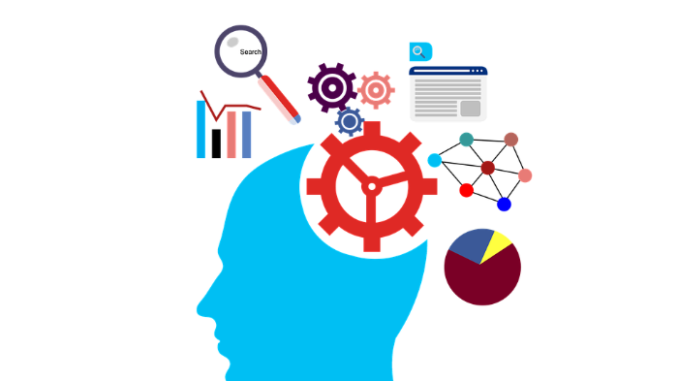
Traditional marketing isn’t what it used to be. The ‘Mad Men’ days of print advertisements, billboards, radio placements, and television ads are coming to an end. A majority of companies are now spending their marketing budgets on digital, social media, and influencer marketing. According to forecasts by media investment company – , overall ad spending will likely fall by 11.8% worldwide. However, traditional ad formats such as television, newspaper, and outdoor advertising will take the biggest hit, falling by 20.7% compared to just 2.4% for digital spending.
As a digital marketing specialist and the owner of multiple successful vehicle history websites, Jesse Willms believes that while traditional marketing still has its place, it isn’t what it used to be. Outlining the history of traditional campaigns and why companies are moving to digital marketing, Jesse he provides an overview of everything you need to know to know about marketing in the 21st century.
The Advent of the Internet
The internet has become the decisive technology of the information age. From communication to access, knowledge and social interaction, the internet has transformed, created, and destroyed entire industries. Jesse Willms explains that just , making it the single most impactful medium for marketing. The internet has made it possible for companies located in a specific geographic region to market their product or services to anyone, anywhere in the world. No longer limited to the confines of geography, budget, or timeline, it is easy to see why traditional marketing is falling out of favour.
Before we compare traditional and digital marketing, let’s define what we mean by traditional. In short, Jesse Willms defines traditional marketing as any type of marketing that isn’t online: billboards, direct mail, print, broadcast, and phone. Before the advent of the internet, these marketing methods reigned supreme. These tactics focused on reaching audiences where they were—listening to the radio, watching television, reading the newspaper, and looking through flyers. While these methods were useful forms of communication several deceases ago, the cultural shift towards an integrated online buying experience has made traditional marketing nice to have, but not a primary focus.
Traditional marketing still exists but is often used as a supplementary approach as opposed to a primary focus. Jesse Willms have several key downsides: they are expensive, you can’t track conversion, they have longer timelines, and you cannot target specific demographics. As a result, the primary players in this space tend to be major corporations who can afford to spend hundreds of thousands of dollars to raise their brand awareness. If you’re a small to medium-sized business, this is not the strategy for you. To compare and contrast, Jesse Willms broke down the primary barriers of traditional marketing and how digital marketing compares.
Digital marketing is far more cost-effective than traditional marketing. Traditional marketing often requires physical assets to be produced—posters, billboards, flyers, etc. The upfront cost to develop a marketing campaign often outweighs the benefits for small to medium-sized businesses. Spending hundreds of thousands of dollars on advertising is often legitimized by immediately trackable metrics, which traditional marketing does not have. Measuring the success of a campaign (or return on investment) requires tracking the individual’s interaction with the ad to purchase—this is not possible with traditional marketing. This brings us to our next point: an inability to track conversions.
Tracking Conversions
Digital marketing has made is possible for companies to run ads that can be tracked, measured, and evaluated. Companies are able to identify which ads converted to purchases, allowing them to accurately calculate return on investment. This metric is vital. For example, if you spend $10 on a digital advertisement and it ends in $50 worth of purchases, your return on investment is 400%. Traditional marketing does not allow you to track these metrics, making it feel a bit like marketing in the dark. When you put a billboard up at Times Square, you can only estimate how many people may have seen the advertisement but will be unable to determine how many of them converted to purchases as a result.
Longer Timelines
Planning a major traditional marketing campaign can take months and sometimes even years. In addition to working around restrictions placed by out-of-home advertisers (including schedules), traditional marketing often utilizes a third party. Oppositely, digital marketing allows you to plan your campaign according to your company’s needs; from date, time, length, and strategy, everything is within your control. If you notice a low ROI on a particular ad, you can easily end it and try another one. Traditional marketing is less responsive and flexible, making the higher investment even less attractive.
Demographics
Building on the inability to track conversions, traditional marketing is unable to target a specific demographic, whereas digital marketing casts a wide net. Psychographics tend to be more effective; psychographics is a qualitative methodology used to describe traits of humans on psychological attributes. Psychographics have been applied to the study of personality, values, opinions, attitudes, interests, and lifestyles. Digital marketing allows you to experiment with multiple parameters that are more likely to connect with your target audience.
Digital marketing is quickly taking over the marketing landscape. Jesse Willms specifically on a ‘maximum viable audience’, digital marketing focuses on the ‘minimum viable audience’. Unlike traditional marketing, like placing an ad during the Superbowl (which can cost upwards of 3 million dollars), minimum viable audience focuses on the smallest potential market that you must lock or serve to maintain your business plan. It aims to resonate deeply with a smaller audience, rather than trying to appeal to everyone. Jesse Willms explains that people’s values have changed over the past 10 years, and they are looking for authentic, genuine, products and services that align with their lived experiences.

Leave a Reply